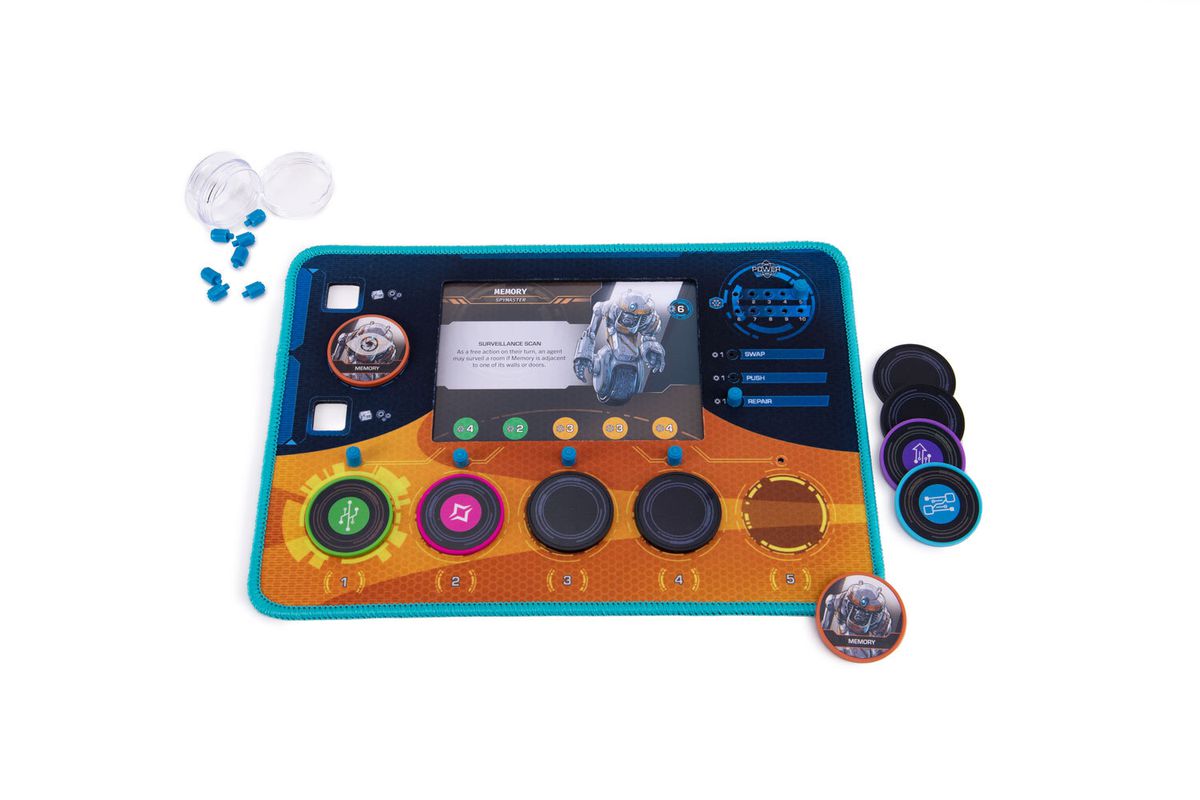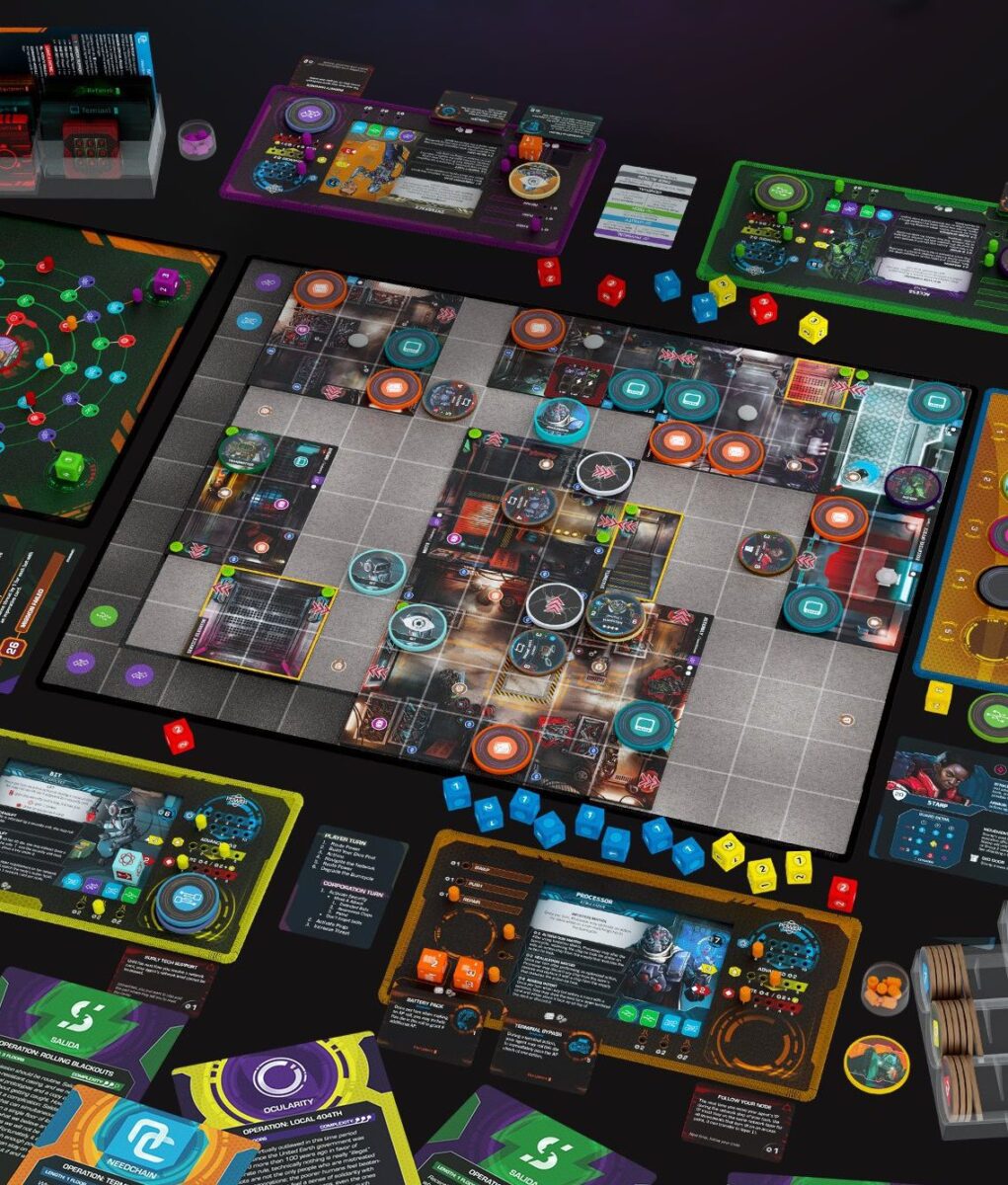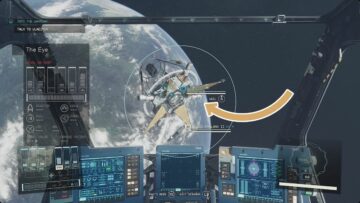The quiet hum of servers and whirring of sentry drones is broken by the clicking actuators of your robotic team of infiltrators. Through a maze of corridors and corporate offices, you will avoid detection and break into rooms seeking access to the company’s secure operations in order to shut them down.
This is Burncycle, the newest release from publisher Chip Theory Games, a small studio known for their sophisticated designs and chunky components that include signature plastic chips and miles of neoprene mats. It’s a fully co-operative experience that has up to four players working together in a complex, stealth-based, tactical game.
Polygon had the chance to preview the game ahead of this year’s Gen Con in Indianapolis and, much like Chip Theory’s previous title, Cloudspire, we found an elaborate game with a massive scope. The various scenarios will have you traversing one to three floors, each analogous to a small dungeon in breadth. This can be quite the commitment, as the longest of options take three or four hours to fully complete. There are, of course, shorter missions, but even these provide a cerebral challenge of juggling multiple sub-systems and processes.
Internalizing the ruleset will take several plays and a strong shot of devotion. Players take turns performing actions which are restrained by the eponymous burncycle. This is a series of chips on a sideboard that you will draw from a bag and manipulate over the course of the game. Each represents an action, with certain chips enhancing specific action types such as terminal or move. This approach heavily influences the tactical approach you construct each round, and how you tackle the obstacles on your current floor of the building you’re trying to infiltrate. Additionally, the burncycle will degrade over time, requiring upkeep from the players as fragmented chips are replaced with fresh options.
Dice are rolled to perform each of these burncycle actions, as you move through hallways, interact with the board, and even occasionally tear apart an enemy sentry or two. The layers come quick, as there are processes for breaking into locked doors, alerting guards, exploring rooms, and managing energy. Enemies have their own activation phase and priority system, pursuing recently spotted infiltrators or moving along a patrol path.

We’re not done. There’s a whole separate minigame representing the digital portion of your team’s heist. You will move your character’s pings across a webbed network, avoiding detection by the AI opponent as you balance your priorities between the physical and mock-digital playspace. This is done to lower the threat level, another system that influences the environmental response. There are other things, such as a command module robot that is shared by players, items to be utilized, and personal goals called imperatives.
At times, it’s simply too much. It can feel more procedural and workmanlike than entertaining or dramatic. I’d liken large swathes of play to the emotional resonance of actually writing software or performing database administration, which is difficult to reconcile with the promise of a robot Ocean’s 11. Too much time is spent waiting in rooms to avoid patrolling sentries or futzing with side-distractions as opposed to actual, meaningful progress.

Yet, there is a deep and rewarding puzzle at the core of it all. Deciphering this enigma is a cognitively engaging experience that offers great satisfaction when you come out the other side. It functions particularly well as a solitary endeavor, allowing you to leave the game setup and return to the problem at your own pace. It’s also surprisingly modular, offering a heap of variable content such as new bots, corporations, and scenarios to mix up play. These interlocking options are the game’s greatest strength, allowing for ease of expansion with additional aftermarket options. The core box is enormous in its own right — and expensive, coming in at $150 just for the base game — but the overall system has legs and the publisher has shown dedication through ongoing support.
Burncycle is a unique and rich tabletop experience that asks for a heavy investment from its players. It’s a very appealing product with striking visuals and classy table presence. Publisher Chip Theory Games is in the middle of its second crowdfunding campaign for the title, this time on Gamefound where the boxed game and all of its expansions are available for pre-order. Delivery is expected by March 2023.












